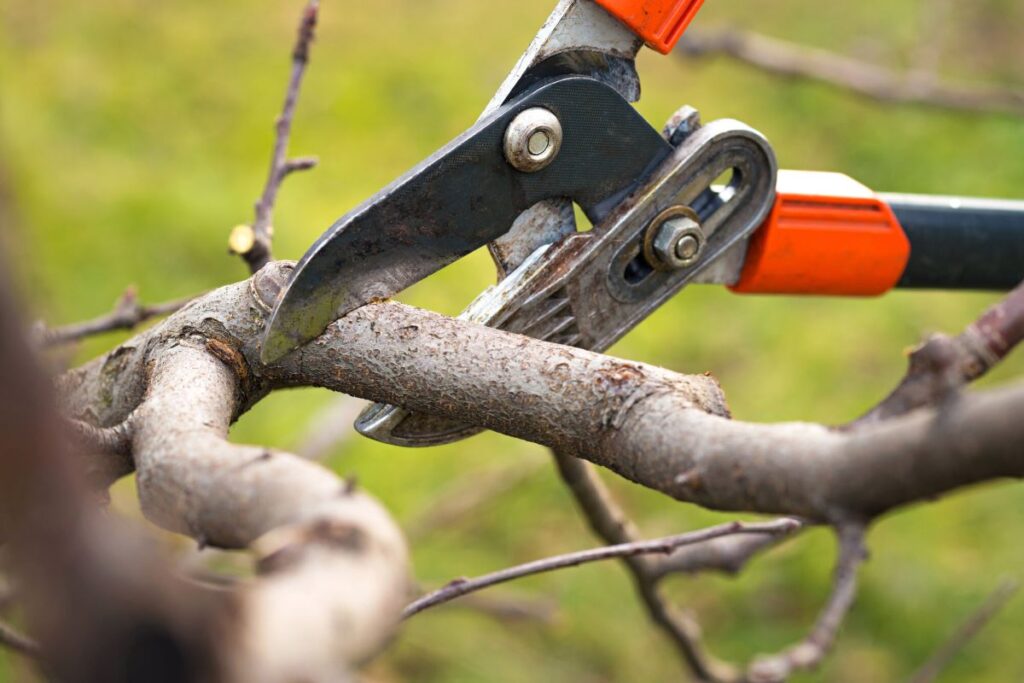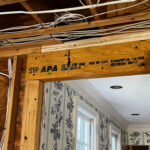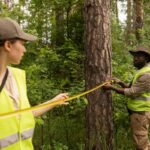When it comes to tree maintenance, one important aspect to consider is tree pruning. Tree pruning involves the removal of certain branches or stems to improve the tree’s health, appearance, or safety. However, before embarking on a tree pruning project, it’s crucial to understand the factors that influence pricing. By gaining insights into tree pruning costs, you can better prepare yourself and make informed decisions. In this article, we will explore the various aspects of tree pruning pricing and what you can expect in terms of costs.
Understanding Tree Pruning
Before diving into the intricacies of tree pruning pricing, it’s essential to grasp the concept of tree pruning itself. Tree pruning is not simply the act of trimming branches; it is a methodical process that involves the selective removal of specific parts of a tree to enhance its overall well-being. Pruning also helps promote better tree structure, mitigate disease and insect infestations, and reduce potential hazards.
Importance of Tree Pruning
Tree Pruning is crucial for several reasons. Firstly, it improves the tree’s aesthetics, creating a neat and visually appealing appearance. Additionally, pruning enhances air circulation within the canopy, allowing sunlight to penetrate and reach the inner branches, promoting healthy growth. Moreover, tree pruning helps in removing dead, diseased, or damaged branches, preventing them from falling and causing harm to people or property.
Different Types of Tree Pruning
Several pruning techniques exist to address specific tree maintenance needs. These techniques include:
- Crown Cleaning: Involves the removal of dead, weak, or diseased branches.
- Crown Thinning: Focuses on selectively removing specific branches to increase light penetration and airflow through the canopy.
- Crown Raising: Involves the removal of lower branches to provide clearance for structures, vehicles, or pedestrians.
- Crown Reduction: Focuses on reducing the size of the tree’s overall canopy by pruning back its branches.
Each type of tree pruning has its unique purpose and specific techniques to achieve the desired outcome.
When it comes to crown cleaning, the removal of dead, weak, or diseased branches is essential to maintain the tree’s health. Dead branches not only detract from the tree’s appearance but can also become a safety hazard, as they are more likely to break and fall during storms or high winds. Weak branches, on the other hand, are prone to breakage under their weight or external stress, posing a risk to people and property.
Crown thinning, another important pruning technique, focuses on selectively removing specific branches to increase light penetration and airflow through the canopy. This allows sunlight to reach the inner branches, promoting photosynthesis and healthy growth. Improved airflow also reduces the risk of fungal diseases, as it helps to dry out the foliage more quickly after rain or dew.
Factors Influencing Tree Pruning Costs
When it comes to pricing tree pruning services, several factors come into play. Understanding these factors will help you estimate and plan for the costs involved. The primary factors influencing tree pruning costs include:
Size of the Tree
The size of the tree directly impacts the amount of work required and, consequently, the pricing. Taller and larger trees demand more time and effort to prune compared to smaller ones. Additionally, the height of the tree affects the equipment needed to complete the pruning job safely.
It’s important to note that the diameter of the tree also plays a significant role in determining the cost of pruning. Thicker branches are more challenging to trim and may require specialized tools or techniques, adding to the overall expenses. Tree pruning professionals often assess the diameter of the branches along with the tree’s height to provide an accurate cost estimate.
Tree Species and Condition
The species of the tree and its overall condition can also affect the pricing. Some tree species require more skillful pruning techniques due to their growth patterns or specific vulnerabilities. Moreover, diseased or infested trees might need extra precautionary measures during pruning, which could lead to higher costs.
In addition, the age of the tree can impact the pruning process. Older trees may have brittle branches that are more prone to breakage, requiring careful handling during pruning. This increased risk can influence the pricing as arborists need to take additional safety measures to prevent accidents and property damage.
Location and Accessibility
The location of the tree and its accessibility are vital factors in determining pricing. Trees situated in hard-to-reach areas or surrounded by obstacles may require specialized equipment or additional effort to complete the pruning job. Therefore, these factors can influence the overall pricing of the tree pruning service.
Furthermore, trees located near power lines or structures pose a higher risk during pruning, as any mistakes can result in costly damages. Arborists may need to use crane services or other complex techniques to ensure the safety of nearby structures while pruning such trees. These additional precautions and equipment requirements can contribute to an increase in the overall cost of the tree pruning service.

Average Cost of Tree Pruning Services
Now that we have discussed the factors influencing tree pruning costs, let’s delve into the average pricing of tree pruning services.
Tree pruning is a crucial aspect of tree maintenance that ensures the health, aesthetics, and safety of your trees. By removing dead or overgrown branches, tree pruning promotes proper growth and reduces the risk of falling limbs during storms or high winds.
Local vs National Rates
Tree pruning costs can vary depending on your location and the prevailing market rates in your area. While national averages can give you a rough estimate, it is essential to consider local rates as they are more representative of the pricing in your specific region. Factors such as the local economy, competition, and the availability of tree care professionals can impact pricing.
Additionally, the type and size of trees on your property can also influence the cost of tree pruning services. Larger trees or those with dense canopies may require more time and effort to prune, leading to higher costs compared to smaller or less complex tree species.
Hourly vs Flat Rates
Tree pruning services may be charged either on an hourly basis or a flat rate. Hourly rates are typically applicable for smaller pruning jobs, while larger projects might benefit from a flat rate. It is advisable to consult with tree care professionals in your area to understand their pricing structure and choose the option that suits your requirements.
Furthermore, the time of year can impact the cost of tree pruning services. Some tree care companies offer discounts during off-peak seasons when demand is lower, making it a cost-effective time to schedule pruning work on your trees.
Additional Costs in Tree Pruning
In addition to the standard tree pruning costs, there are a few additional expenses to consider.
Emergency Tree Pruning
In some cases, emergency tree pruning may be necessary if a tree poses an immediate safety risk or is damaged during a storm. Emergency tree pruning services may incur extra costs due to the urgency and specialized equipment required to handle such situations.
It’s crucial to address emergency tree pruning promptly to prevent further damage to property or individuals. Tree care professionals trained in emergency services are equipped to assess the situation quickly and take appropriate action to mitigate risks. The added costs associated with emergency tree pruning reflect the immediate response and expertise required to ensure safety and property protection.
Disposal of Tree Waste
After tree pruning, there is often a significant amount of tree waste to dispose of, such as branches and debris. The cost of waste disposal may vary depending on the quantity and local regulations. Some tree care professionals include waste disposal in their pricing, while others may charge separately for this service.
Proper disposal of tree waste is essential not only for aesthetic reasons but also for environmental sustainability. Tree care companies often have partnerships with recycling facilities or composting centers to ensure that tree waste is disposed of in an eco-friendly manner. The additional cost associated with waste disposal accounts for the transportation and processing involved in handling tree debris responsibly.

Saving on Tree Pruning Costs
While tree pruning is an essential investment in tree care and maintaining your property’s aesthetics and safety, it is natural to seek ways to save on costs. Here are a couple of strategies that can help you reduce tree pruning expenses:
Seasonal Discounts
Some tree care companies may offer seasonal discounts or promotions during specific times of the year. By being aware of these opportunities, you can take advantage of them and schedule your tree pruning accordingly.
Bundling Services
If you require multiple tree care services, such as pruning, tree removal, or stump grinding, consider bundling these services with the same tree care professional. Often, companies offer discounts or package deals for combined services, enabling you to save on overall costs.
Another way to potentially save on tree pruning costs is by exploring DIY options for simpler pruning tasks. While it’s crucial to hire professionals for complex or high-reaching pruning jobs, there are some basic pruning techniques you can learn to perform on your own. By investing in the right tools and educating yourself on proper pruning methods, you may be able to tackle minor pruning tasks independently, saving on professional service fees.
Furthermore, it’s essential to prioritize preventive tree care to minimize the need for extensive pruning in the future. Regularly inspect your trees for signs of disease, pest infestations, or structural issues, and address them promptly to maintain tree health. By staying proactive with tree care, you can potentially reduce the frequency and intensity of pruning required, ultimately saving on long-term maintenance costs.
By understanding the various aspects of tree pruning pricing, you are now better equipped to make informed decisions while planning your tree pruning project. Remember that each tree pruning job is unique, and accurate pricing can only be determined after a thorough evaluation by a certified tree care professional. So, consult with experts in your area to receive personalized quotes and ensure your trees receive the care they deserve.
Related: Essential Tree Pruning Tools for DIY Enthusiasts





